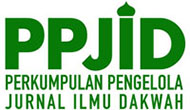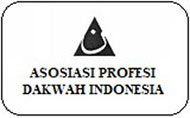Fenomena Cyber Religion sebagai Ekspresi Keberagamaan di Internet pada Komunitas Shift (Cyber Religion Phenomenon as a Religious Expression on the Internet in the Shift Community)
DOI:
https://doi.org/10.24014/jdr.v32i1.11626Keywords:
Cyber religion, online religion, shiftAbstract
This article aims to determine the form of Shift's religious expression and the factor of the Shift community's interest in the context of cyberreligion. The research method is qualitative with the type of phenomenological research. There are 5 research subjects (subscribers) and the research object of the YouTube channel Shift. The interactive model analysis technique of Miles & Huberman from the results of data collection that the authors get. The results showed that the phenomenon of cyberreligion has touched various circles and was used by Ust. Hanan Attaki by establishing a Shift which targets the younger generation in the form of online religion. The use of YouTube as a means of spreading Shift's da'wah is categorized into the File-Sharing category. The study, which is nicely packaged by Ust. Hanan Attaki, has made it loved by the younger generation as an alternative in their religious information.References
Abdurrahman, M. S. (2020). Generasi Muda , Agama Islam , dan Media Baru : Perilaku Keagamaan Gerakan Shift Pemuda Hijrah Bandung. Jurnal Anida:Aktualisasi Nuansa Ilmu Dakwah), 20(1), 46–63.
Ahmad, A. (2014). Dinamika Komunikasi Islami di Media Online. Jurnal Ilmu Komunikasi, 11(April), 44–58. Retrieved from http://jurnal.upnyk.ac.id/index.php/komunikasi/article/download/308/262
Ardinal. (2014). Paradigma dan Model Penelitian Komunikasi (Cet.ke-1). Jakarta: Bumi Aksara.
Arifuddin. (2016). Dakwah Through Internet: Challenges and Opportunities for Islamic. Ar-Raniry: International Journal of Islamic Studies, 3(2), 118–129.
Asosiasi Penyelenggara Jaringan Internet Indonesia. (2020). Jumlah Pengguna Internet di Indonesia pada Kuartal ke-II. Jakarta. Retrieved from https://apjii.or.id/survey
Aziz, M. A. (2016). Ilmu Dakwah. Jakarta: Kencana.
Bagdikian, B. H. (2004). The New Media Monopoly: A Completely Revised and Updated Edition With Seven New Chapters (20th ed). USA: Beacon Press.
Bungin, B. (2007). Penelitian Kualitatif : Komunikasi, Ekonomi, Kebijakan Publik, dan Ilmu Sosial Lainnya (Edisi Ke-2). Jakarta: Kencana Prenada Media Group.
Data Dokumentasi Youtube Pemuda Hijrah. (2017). Retrieved 12 August 2020, from https://www.youtube.com/channel/UCVes0G5DqPa3ZHPL4W2OrhA
Data Observasi Website Pemuda Hijrah. (2017). Retrieved 1 July 2021, from https://pemudahijrah.id/
Dawson, L. L., & Cowan, D. E. (2004). Religion Online: Finding Faith on the Internet (1st editio). London: Routledge.
Denzin, N. K., & Yvonna S, L. (2009). Handbook Of Qualitative Research (Terjemahan Dariyatno). Yogyakarta: Pustaka Pelajar.
Devi, N. R. (2019). Moslem Missionary Communication of Pemuda Hijrah. Jurnal Manajemen Komunikasi, 3(2), 173–184.
Fakhruroji, M. (2017). Dakwah di Era Media Baru: Teori dan Aktivisme Dakwah di Internet. Bandung: Simbiosa Rekatama Media.
Farchan, Y. (2020, July). Islam Virtual Milenial Muslim Urban Indonesia. Retrieved 12 September 2020, from https://www.timesindonesia.co.id/read/news/288245/islam-virtual-ekspresi-keagamaan-milenial-muslim-urban-indonesia
Gary R, B. (2009). iMuslim: Rewiring the House of Islam (Islamic Ci). United States: University of North Carolina.
Hamali, S. (2016). Karakteristik Keberagaman Remaja Dalam Perspektif Psikologi. Jurnal Al-Adyan: Studi Lintas Agama, 11(1), 1–18. Retrieved from http://103.88.229.8/index.php/alAdyan/article/view/1438
Hasan, N. (2019). Ulama dan Negara-Bangsa: Membaca Masa Depan Islam Politik di Indonesia (Cet.1). Yogyakarta: Pusat Peb=ngkajian Islam, Demokrasi, dan Perdamaian (PusPIDeP).
Helland, C. (2007). Diaspora on the Electronic Frontier : Developing Virtual Connections with Sacred Homelands. Journal of Computer-Mediated Communication, 12, 956–976. doi:10.1111/j.1083-6101.2007.00358.x
Ilaihi, W., & Andriyani, K. (2010). Komunikasi Dakwah (Cet-2). Bandung: Remaja Rosdakarya.
Iqbal, A. M. (2016). Cyber-Religion and the Secularization Thesis. Jurnal Komunikasi Islam, 6(1), 1–28.
Ishanan, I. (2017). Dakwah di Era Cyberculture: Peluang dan Tantangan. Jurnal Komunike, 9(2), 91–104.
Jinan, M. (2013). Intervensi New Media dan Impersonalisasi Otoritas Keagamaan di Indonesia. Jurnal Komunikasi Islam, 3(2), 311–348. doi:https://doi.org/10.15642/jki.2013.3.2.%p
Kemp, S. (2020). Digital 2020: 3.8 Billion People Use Social Media. Retrieved from https://wearesocial.com/blog/2020/01/digital-2020-3-8-billion-people-use-social-media
Khalida Yusria, & Komariah, K. (2018). Transformasi Identitas Anggota Gerakan Pemuda Hijrah (Studi Fenomenologi Tentang Perubahan Pola Komunikasi dan Citra Diri Anggota Gerakan Pemuda Hijrah). Jurnal Riset Komunikasi, 9(1), 34–52. Retrieved from http://jurnal.untirta.ac.id/index.php/JRKom/issue/viewIssue/589/121
Khoiruzzaman, W. (2016). Urgensi Dakwah Media Cyber Berbasis Peace Journalism. Jurnal Ilmu Dakwah, 36(2), 316–334. doi:DOI:http://dx.doi/10.21580/jid.36i.2.1775
Malik, H. (2021). Cyber Religion dan Real Religion di tengah Masyarakat Digital. Jurnal Komunika, 4(1), 63–78. doi:https://doi.org/10.24042/komunika.v4i1.8615
Mazaya, V. (2019). Cyberdakwah Sebagai Filter Penyebaran Hoax. Islamic Communication Journal, 4(1), 14–25.
Nawawi, H. (1998). Metode Penelitian Bidang Sosial. Yogyakarta: Gajahmada Universitas Press.
Nur, S., & Abdullah, I. bin. (2014). The Implication of Excessive Internet Usage on the Study of Hadith. Journal of Islam in Asia, 10(2), 118. doi:10.31436/jia.v10i2.398
Possamai, A. (2005). Religion and Popular Culture : A Hyper-Real Testament. Brussels: P.I.E.-Peter Lang.
Raco, J. (2010). Metode Penelltlan Kualltatlf Jenis, Karakteristik, dan Keunggulannya. Jakarta: Grasindo.
Rumadi. (2012). Islam dan Otoritas Keagamaan. Jurnal Studi Komunikasi, 20((1)), 25–54.
Saefulloh, A. (2012). Cyberdakwah sebagai Media Alternatif Dakwah. Jurnal Islamica: Jurnal Studi Keislaman, 7(1), 138–160. doi:https://doi.org/10.15642.islamica.2012.7.1.138-160
Salman, Y. (2015). Dakwah di Internet : Konsep Ideal , Kondisi Objektif dan Prosfeknya. Jurnal Al-Bayan, 22(31), 56–70.
Setiansah, M. (2015). Smartphonisasi Agama: Transformasi Perilaku Beragama Perempuan Urban Di Era Digital. Jurnal Komunikasi, 10(1), 1–10. doi:10.20885/komunikasi.vol10.iss1.art1
Sugiyono. (2017). Metode Penelitian Kuantitatif, Kualitatif dan R&D (Cet ke-26). Bandung: Alfabeta.
Taufik, M., & Taufik, A. (2020). Hijrah and Pop Culture: Hijab and Other Muslim Fashions Among Students in Lombok, West Nusa Tenggara. Teosofia, 8(2), 97–116. Retrieved from http://journal.walisongo.ac.id/index.php/teosofia/article/view/5305
Wibowo, A. (2019). Penggunaan Media Sosial sebagai Trend Media Dakwah Pendidikan Islam di Era Digital. Jurnal Islam Nusantara, 3(2), 339–356. Retrieved from http://www.jurnalnu.com/index.php/as/article/view/141
Zahara, M. N., Wildan, D., & Komariah, S. (2020). Gerakan Hijrah: Pencarian Identitas Untuk Muslim Milenial di Era Digital. Indonesian Journal of Sociology, Education, and Development, 2(1), 52–65. doi:10.52483/ijsed.v2i1.21
Zaini, A. (2012). Dakwah Melalui Internet. Jurnal At-Tabsyir: Jurnal Komunikasi Penyiaran Islam, 1(1), 93–108.









